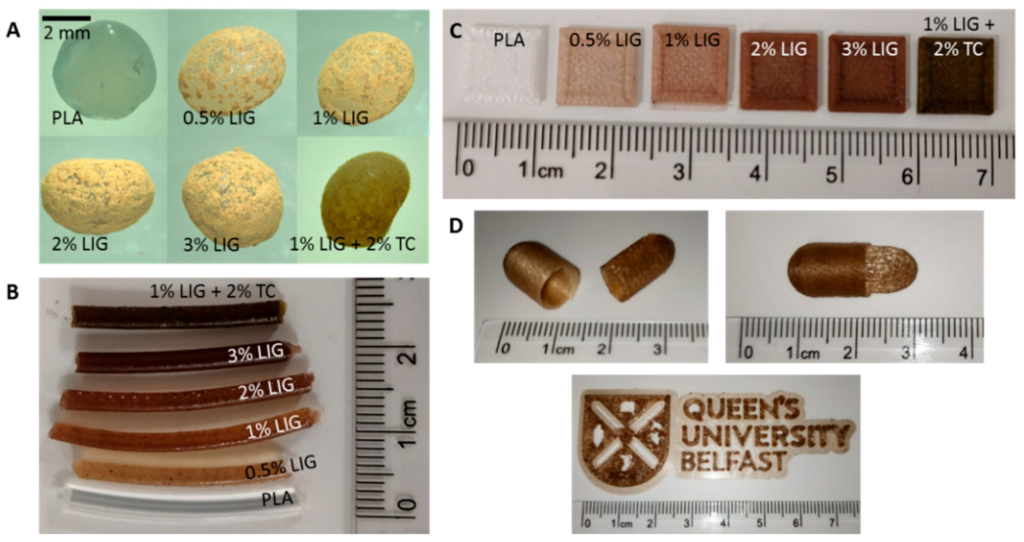[해외]Belfast : 산화 방지제 PLA 복합재로 3D프린팅을 통해 의료 응용 분야에서 잠재력을 발휘
- 2019-12-09
- 관리자
○ 본문요약 :
이전에는 SLA 3D 프린팅을 사용하여 생체 흡수성 능력을 가진 항산화 혈관 스텐트를 제작했으며 SLS 3D 프린팅을 사용하여 세포 성장을 촉진하는 항산화 물질을 사용했습니다. 실제 화합물은 공개되지 않았지만 연구원들은 항산화 특성을 갖는 UV- 안정성 폴리 아미드 12 물질을 사용했다고보고했다. LIG는 항산화 제와 항 미생물제를 모두 보유한 것으로 알려져 있으며 우연히도 지구상에서 두 번째로 풍부한 폴리머이며 연구자들은 특히 생체 의학 응용 분야에 대해 많은 연구를하고 있습니다.
여기 PLA와 LIG 결합 연구원으로, 목적은 재료, 압출을 통해 결합 특징으로하고 실제로 FDM 3D 인쇄에 사용 된 바와 같이 의료에 대한 복합을 개발하는 것이 었습니다. 이들 복합재는 국소 항균 특성에 대한 가능성으로 인해 상처 드레싱에 사용될 수있을 것으로 예상된다. 연구원들은 테트라 사이클린 (TC)을 항균제로 사용했습니다.
Previously, SLA 3D printing was used to fabricate antioxidant vascular stents with bioresorbable abilities, while SLS 3D printing was used to create materials with antioxidants to promote cell growth. While the actual compound was not disclosed, the researchers reported that they used UV-stable polyamide 12 material with antioxidant properties. LIG is known to possess both antioxidants and antimicrobes and incidentally, is also the second most abundant polymer on our planet—with researchers still having plenty of studying to do—especially for biomedical applications.
As the researchers combined LIG with PLA here, the intent was to develop a composite for healthcare as the materials were combined through extrusion, characterized, and then actually used in FDM 3D printing. It is expected that these composites can be used for wound dressings due to the potential for localized antibacterial qualities. Here, the researchers used tetracycline (TC) as the antibacterial agent.
Photographs of: PLA and PLA coated pellets (A); LIG and TC containing PLA filaments (B); LIG and TC containing 1 cm × 1 cm squares prepared using 3D printing (C); and different shapes printed using the filament containing 2% (w/w) LIG (D).

















